 Practice and Applications
by Allyn J. Washington,
Richard Evans
Basic Technical Mathematics, 11th Edition
Practice and Applications
by Allyn J. Washington,
Richard Evans
Basic Technical Mathematics, 11th Edition
- Basic Technical Mathematics
- Contents
- Preface
- BASIC CURVES
- MyMathLab
- 1 Basic Algebraic Operations
- LEARNING OUTCOMES
- 1.1 Numbers
- 1.2 Fundamental Operations of Algebra
- 1.3 Calculators and Approximate Numbers
- 1.4 Exponents and Unit Conversions
- 1.5 Scientific Notation
- 1.6 Roots and Radicals
- 1.7 Addition and Subtraction of Algebraic Expressions
- 1.8 Multiplication of Algebraic Expressions
- 1.9 Division of Algebraic Expressions
- 1.10 Solving Equations
- 1.11 Formulas and Literal Equations
- 1.12 Applied Word Problems
- CHAPTER 1 KEY FORMULAS AND EQUATIONS
- CHAPTER 1 REVIEW EXERCISES
- CHAPTER 1 PRACTICE TEST
- 2 Geometry
- 3 Functions and Graphs
- 4 The Trigonometric Functions
- 5 Systems of Linear Equations; Determinants
- LEARNING OUTCOMES
- 5.1 Linear Equations and Graphs of Linear Functions
- 5.2 Systems of Equations and Graphical Solutions
- 5.3 Solving Systems of Two Linear Equations in Two Unknowns Algebraically Solving Systems of Two Linear Equations in Two Unknowns Algebraically
- 5.4 Solving Systems of Two Linear Equations in Two Unknowns by Determinants Solving Systems of Two Linear Equations in Two Unknowns by Determinants
- 5.5 Solving Systems of Three Linear Equations in Three Unknowns Algebraically Solving Systems of Three Linear Equations in Three Unknowns Algebraically
- 5.6 Solving Systems of Three Linear Equations in Three Unknowns by Determinants Solving Systems of Three Linear Equations in Three Unknowns by Determinants
- CHAPTER 5 KEY FORMULAS AND EQUATIONS
- CHAPTER 5 REVIEW EXERCISES
- CHAPTER 5 PRACTICE TEST
- 6 Factoring and Fractions Factoring and Fractions
- LEARNING OUTCOMES
- 6.1 Factoring: Greatest Common Factor and Difference of Squares Factoring: Greatest Common Factor and Difference of Squares
- 6.2 Factoring Trinomials
- 6.3 The Sum and Difference of Cubes
- 6.4 Equivalent Fractions
- 6.5 Multiplication and Division of Fractions
- 6.6 Addition and Subtraction of Fractions
- 6.7 Equations Involving Fractions
- CHAPTER 6 KEY FORMULAS AND EQUATIONS
- CHAPTER 6 REVIEW EXERCISES
- CHAPTER 6 PRACTICE TEST
- 7 Quadratic Equations
- 8 Trigonometric Functions of Any Angle
- 9 Vectors and Oblique Triangles
- 10 Graphs of the Trigonometric Functions
- LEARNING OUTCOMES
- 10.1 Graphs of y = a sin x and y = a cos x Graphs of y = a sin x and y = a cos x
- 10.2 Graphs of y = a sin bx and y = a cos bx Graphs of y = a sin bx and y = a cos bx
- 10.3 Graphs of y = a sin( bx + c) and y = a cos(bx + c) Graphs of y = a sin( bx + c) and y = a cos(bx + c)
- 10.4 Graphs of y = tan x , y = cot x , y = sec x , y =
- 10.5 Applications of the Trigonometric Graphs
- 10.6 Composite Trigonometric Curves
- CHAPTER 10 KEY FORMULAS AND EQUATIONS
- CHAPTER 10 REVIEW EXERCISES
- CHAPTER 10 PRACTICE TEST
- 11 Exponents and Radicals
- LEARNING OUTCOMES
- 11.1 Simplifying Expressions with Integer Exponents
- 11.2 Fractional Exponents
- 11.3 Simplest Radical Form
- 11.4 Addition and Subtraction of Radicals
- 11.5 Multiplication and Division of Radicals
- CHAPTER 11 KEY FORMULAS AND EQUATIONS
- CHAPTER 11 REVIEW EXERCISES
- CHAPTER 11 PRACTICE TEST
- 12 Complex Numbers
- LEARNING OUTCOMES
- 12.1 Basic Definitions
- 12.2 Basic Operations with Complex Numbers
- 12.3 Graphical Representation of Complex Numbers
- 12.4 Polar Form of a Complex Number
- 12.5 Exponential Form of a Complex Number
- 12.6 Products, Quotients, Powers, and Roots of Complex Numbers Products, Quotients, Powers, and Roots of Complex Numbers
- 12.7 An Application to Alternating-current (ac) Circuits
- CHAPTER 12 KEY FORMULAS AND EQUATIONS
- CHAPTER 12 REVIEW EXERCISES
- CHAPTER 12 PRACTICE TEST
- 13 Exponential and Logarithmic Functions
- LEARNING OUTCOMES
- 13.1 Exponential Functions
- 13.2 Logarithmic Functions
- 13.3 Properties of Logarithms
- 13.4 Logarithms to the Base 10
- 13.5 Natural Logarithms
- 13.6 Exponential and Logarithmic Equations
- 13.7 Graphs on Logarithmic and Semilogarithmic Paper
- CHAPTER 13 KEY FORMULAS AND EQUATIONS
- CHAPTER 13 REVIEW EXERCISES
- CHAPTER 13 PRACTICE TEST
- 14 Additional Types of Equations and Systems of Equations Additional Types of Equations and Systems of Equations
- 15 Equations of Higher Degree
- 16 Matrices; Systems of Linear Equations
- LEARNING OUTCOMES
- 16.1 Matrices: Definitions and Basic Operations
- 16.2 Multiplication of Matrices
- 16.3 Finding the Inverse of a Matrix
- 16.4 Matrices and Linear Equations
- 16.5 Gaussian Elimination
- 16.6 Higher-order Determinants
- CHAPTER 16 KEY FORMULAS AND EQUATIONS
- CHAPTER 16 REVIEW EXERCISES
- CHAPTER 16 PRACTICE TEST
- 17 Inequalities
- LEARNING OUTCOMES
- 17.1 Properties of Inequalities
- 17.2 Solving Linear Inequalities
- 17.3 Solving Nonlinear Inequalities
- 17.4 Inequalities Involving Absolute Values
- 17.5 Graphical Solution of Inequalities with Two Variables
- 17.6 Linear Programming
- CHAPTER 17 KEY FORMULAS AND EQUATIONS
- CHAPTER 17 REVIEW EXERCISES
- CHAPTER 17 PRACTICE TEST
- 18 Variation
- 19 Sequences and the Binomial Theorem
- 20 Additional Topics in Trigonometry
- LEARNING OUTCOMES
- 20.1 Fundamental Trigonometric Identities
- 20.2 The Sum and Difference Formulas
- 20.3 Double-Angle Formulas
- 20.4 Half-Angle Formulas
- 20.5 Solving Trigonometric Equations
- 20.6 The Inverse Trigonometric Functions
- CHAPTER 20 KEY FORMULAS AND EQUATIONS
- CHAPTER 20 REVIEW EXERCISES
- CHAPTER 20 PRACTICE TEST
- 21 Plane Analytic Geometry
- LEARNING OUTCOMES
- 21.1 Basic Definitions
- 21.2 The Straight Line
- 21.3 The Circle
- 21.4 The Parabola
- 21.5 The Ellipse
- 21.6 The Hyperbola
- 21.7 Translation of Axes
- 21.8 The Second-degree Equation
- 21.9 Rotation of Axes
- 21.10 Polar Coordinates
- 21.11 Curves in Polar Coordinates
- CHAPTER 21 KEY FORMULAS AND EQUATIONS
- CHAPTER 21 REVIEW EXERCISES
- CHAPTER 21 PRACTICE TEST
- 22 Introduction to Statistics
- LEARNING OUTCOMES
- 22.1 Graphical Displays of Data
- 22.2 Measures of Central Tendency
- 22.3 Standard Deviation
- 22.4 Normal Distributions
- 22.5 Statistical Process Control
- 22.6 Linear Regression
- 22.7 Nonlinear Regression
- CHAPTER 22 KEY FORMULAS AND EQUATIONS
- CHAPTER 22 REVIEW EXERCISES
- CHAPTER 22 PRACTICE TEST
- APPENDIX A Solving Word Problems
- APPENDIX B Units of Measurement
- Photo Credits
- Answers to Odd-Numbered Exercises and Chapter Review Exercises
- Exercises 1.1, page 5
- Exercises 1.2, page 10
- Exercises 1.3, page 16
- Exercises 1.4, page 22
- Exercises 1.5, page 26
- Exercises 1.6, page 28
- Exercises 1.7, page 33
- Exercises 1.8, page 35
- Exercises 1.9, page 38
- Exercises 1.10, page 42
- Exercises 1.11, page 44
- Exercises 1.12, page 48
- Review Exercises for Chapter 1, page 50
- Exercises 2.1, page 57
- Exercises 2.2, page 63
- Exercises 2.3, page 67
- Exercises 2.4, page 70
- Exercises 2.5, page 75
- Exercises 2.6, page 78
- Review Exercises for Chapter 2, page 81
- Exercises 3.1, page 88
- Exercises 3.2, page 92
- Exercises 3.3, page 95
- Exercises 3.4, page 100
- Exercises 3.5, page 106
- Exercises 3.6, page 109
- Review Exercises for Chapter 3, page 110
- Review Exercises for Chapter 4, page 135
- Exercises 5.1, page 146
- Exercises 5.2, page 150
- Exercises 5.3, page 157
- Exercises 5.4, Page 163
- Exercises 5.5, page 167
- Exercises 5.6, page 173
- Review Exercises for Chapter 5, page 175
- Exercises 6.1, page 185
- Exercises 6.2, page 192
- Exercises 6.3, page 194
- Exercises 6.4, page 198
- Exercises 6.5, page 203
- Exercises 6.6, page 208
- Exercises 6.7, page 213
- Review Exercises for Chapter 6, page 215
- Exercises 7.1, page 224
- Exercises 7.2, page 227
- Exercises 7.3, page 230
- Exercises 7.4, page 235
- Review Exercises for Chapter 7, page 237
- Exercises 8.1, page 243
- Exercises 8.2, page 248
- Exercises 8.3, page 252
- Exercises 8.4, page 257
- Review Exercises for Chapter 8, page 260
- Exercises 9.1, page 267
- Exercises 9.2, page 270
- Exercises 9.3, page 276
- Exercises 9.4, page 281
- Exercises 9.5, page 288
- Exercises 9.6, page 293
- Review Exercises for Chapter 9, page 295
- Exercises 10.1, page 302
- Exercises 10.2, page 305
- Exercises 10.3, page 309
- Exercises 10.4, page 312
- Exercises 10.5, page 314
- Exercises 10.6, page 318
- Review Exercises for Chapter 10, page 320
- Exercises 11.1, page 327
- Exercises 11.2, page 331
- Exercises 11.3, page 335
- Exercises 11.4, page 338
- Exercises 11.5, page 341
- Review Exercises for Chapter 11, page 343
- Exercises 12.1, page 348
- Exercises 12.2, page 351
- Exercises 12.3, page 353
- Exercises 12.4, page 356
- Exercises 12.5, page 358
- Exercises 12.6, page 363
- Exercises 12.7, page 369
- Review Exercises for Chapter 12, page 371
- Exercises 13.1, page 375
- Exercises 13.2, page 379
- Exercises 13.3, page 384
- Exercises 13.4, page 387
- Exercises 13.5, page 390
- Exercises 13.6, page 394
- Exercises 13.7, page 398
- Review Exercises for Chapter 13, page 400
- Exercises 14.1, page 406
- Exercises 14.2, page 409
- Exercises 14.3, page 413
- Exercises 14.4, page 417
- Review Exercises for Chapter 14, page 418
- Exercises 15.1, page 425
- Exercises 15.2, page 430
- Exercises 15.3, page 435
- Review Exercises for Chapter 15, page 436
- Exercises 16.1, page 443
- Exercises 16.2, page 447
- Exercises 16.3, page 452
- Exercises 16.4, page 456
- Exercises 16.5, page 460
- Exercises 16.6, page 464
- Review Exercises for Chapter 16, page 466
- Exercises 17.1, page 474
- Exercises 17.2, page 479
- Exercises 17.3, page 484
- Exercises 17.4, page 488
- Exercises 17.5, page 491
- Exercises 17.6, page 495
- Review Exercises for Chapter 17, page 496
- Exercises 18.1, page 502
- Exercises 18.2, page 507
- Review Exercises for Chapter 18, page 510
- Exercises 19.1, page 517
- Exercises 19.2, page 521
- Exercises 19.3, page 525
- Exercises 19.4, page 530
- Review Exercises for Chapter 19, page 531
- Exercises 20.1, page 541
- Exercises 20.2, page 546
- Exercises 20.3, page 549
- Exercises 20.4, page 553
- Exercises 20.5, page 557
- Exercises 20.6, page 563
- Review Exercises for Chapter 20, page 565
- Exercises 21.1, page 572
- Exercises 21.2, page 577
- Exercises 21.3, page 582
- Exercises 21.4, page 586
- Exercises 21.5, page 592
- Exercises 21.6, page 597
- Exercises 21.7, page 601
- Exercises 21.8, page 604
- Exercises 21.9, page 608
- Exercises 21.10, page 611
- Exercises 21.11, page 615
- Review Exercises for Chapter 21, page 617
- Exercises 22.1, page 624
- Exercises 22.2, page 629
- Exercises 22.3, page 632
- Exercises 22.4, page 636
- Exercises 22.5, page 641
- Exercises 22.6, page 646
- Exercises 22.7, page 649
- Review Exercises for Chapter 22, page 651
- Solutions to Practice Test Problems
- INDEX OF APPLICATIONS
- Acoustics
- Aeronautics
- Architecture
- Astronomy
- Automotive Technology
- Biology and Medical Science
- Business and Finance
- Chemistry
- Civil Engineering
- Computer
- Construction
- Design
- Electricity and Electronics
- Energy Technology
- Environmental Science
- Fire Science
- Geodesy, Geology, Seismology
- Hydrodynamics and Hydrostatics
- Machine Technology
- Materials
- Measurement
- Meteorology
- Motion
- Navigation
- Nuclear and Atomic Physics
- Optics
- Petroleum
- Photography
- Physics
- Police Science
- Refrigeration and Air Conditioning
- Space Technology
- Statics
- Strength of Materials
- Surveying
- Thermal
- Thermodynamics
- Wastewater Technology
- Index
Practice and Applications
7.
A = 4πt2 9.
y = 50.000 − 1.25x 11. 16,
− 47 13. 3,
1 − 4h−−−−−−√ + 2 15.
h3 + 11h2 + 36h 17.
− 4 19.
− 3.67 , 16.721. 0.16503,
− 0.21476 23. Domain: all real numbers; range: all real numbers
f(x) ≥ 1 25. Domain: all real numbers
t > − 4 ; range: all real numbersg(t) > 0 27. Domain: all real numbers except 5; range: all real numbers
f(n) > 1 -

-
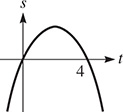
-

-
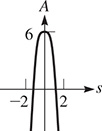
-
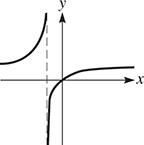
39. 0.4
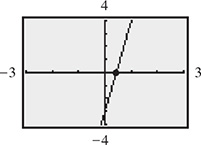
41. 0.2, 5.8

43. 1.4
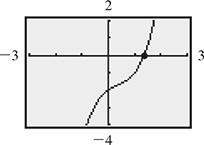
45.
− 4.1 , 1.0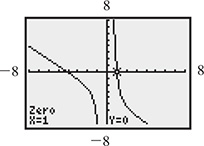
47. All real numbers
y ≥ − 6.25 
49. All real numbers
y ≤ − 2.83 ory ≥ 2.83 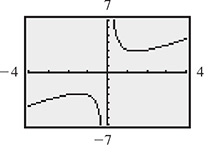
51. Either a or b is positive, the other is negative.
53.
(1 , 3–√) or(1 , − 3–√) 55. In any quadrant (not on an axis)
57. Many possibilities (two shown)
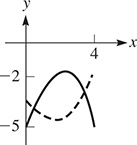
59.
y = x + 1−−−−−√ + 1 61. They are reflections of each other across the y-axis.

63. Yes; no two x-values arc the same.
65.
A = 12 πs2 67. 13.4
69.
72.0 ° -
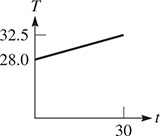
-
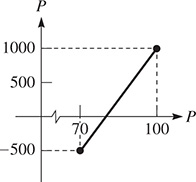
75.
L = 2πr + 12 
77. f(T)
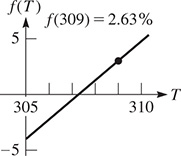
-
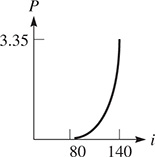
-
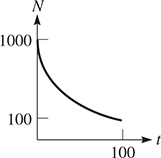
-

85. 11.3 ft
87. 3.5 h

89.
33 ° C 91. 1.03 ft
93. 15.5 ft
95. 6.5 h
-
No Comment